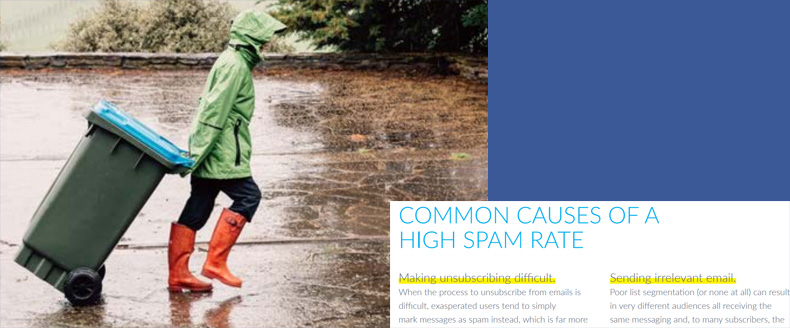According to a new report from online advocacy platform EveryAction, that number may be 20%…or more. The 2017 Nonprofit Email Deliverability Study is the brainchild of deliverability guru (and friend of e.politics) Brett Schenker, and the numbers it presents are sobering. Brett calculates an average spam rate for the organizations they studied of 18.21%, which translated into a potential loss of 22.2 PERCENT of what these groups could have raised (email deliverability plummeted at year’s end and on Giving Tuesday, which I assume accounts for some of the difference in the two percentages).
The study points out four big errors nonprofits commit:
- Making unsubscribing difficult
- Using an out-of-date email list
- Sending irrelevant email
- High complaint rates
The effects are serious, particularly at high-volume times:
- “Of the nonprofits we analyzed, spam rates during the last week of the EOY fundraising push were more than double the previous year’s rates, climbing to 23.61% from 8.60%. On the very last day of 2016, open rates fell to 17.75% and spam soared to 35.99%.”
- Similarly, on Giving Tuesday, fully 36.68% of messages from the nonprofits studied failed to reach their targets.
That’s a lot of money left on the table! What can organizations do to improve their chances of actually reaching their donors? Brett suggests focusing on:
- Requiring opt-in & confirmation
- Ramping up your messaging with a “Welcome Series”
- Looking beyond opens & clicks to include more data in your planning
- Focusing on bounces
- Paying attention to inactives
- Checking your HTML
For more details, download your copy of the report. You can also sign up for a May 31 webinar to hear the hard truth from the Schenker’s mouth.
Meanwhile, what about political campaign emails? One shudders to think of the shoddy practices at play, from list-bombardment to the purchasing of lists whose members may send unsolicited messages straight to spam. What good is online fundraising if we can’t reach the people who want to give?
– cpd

